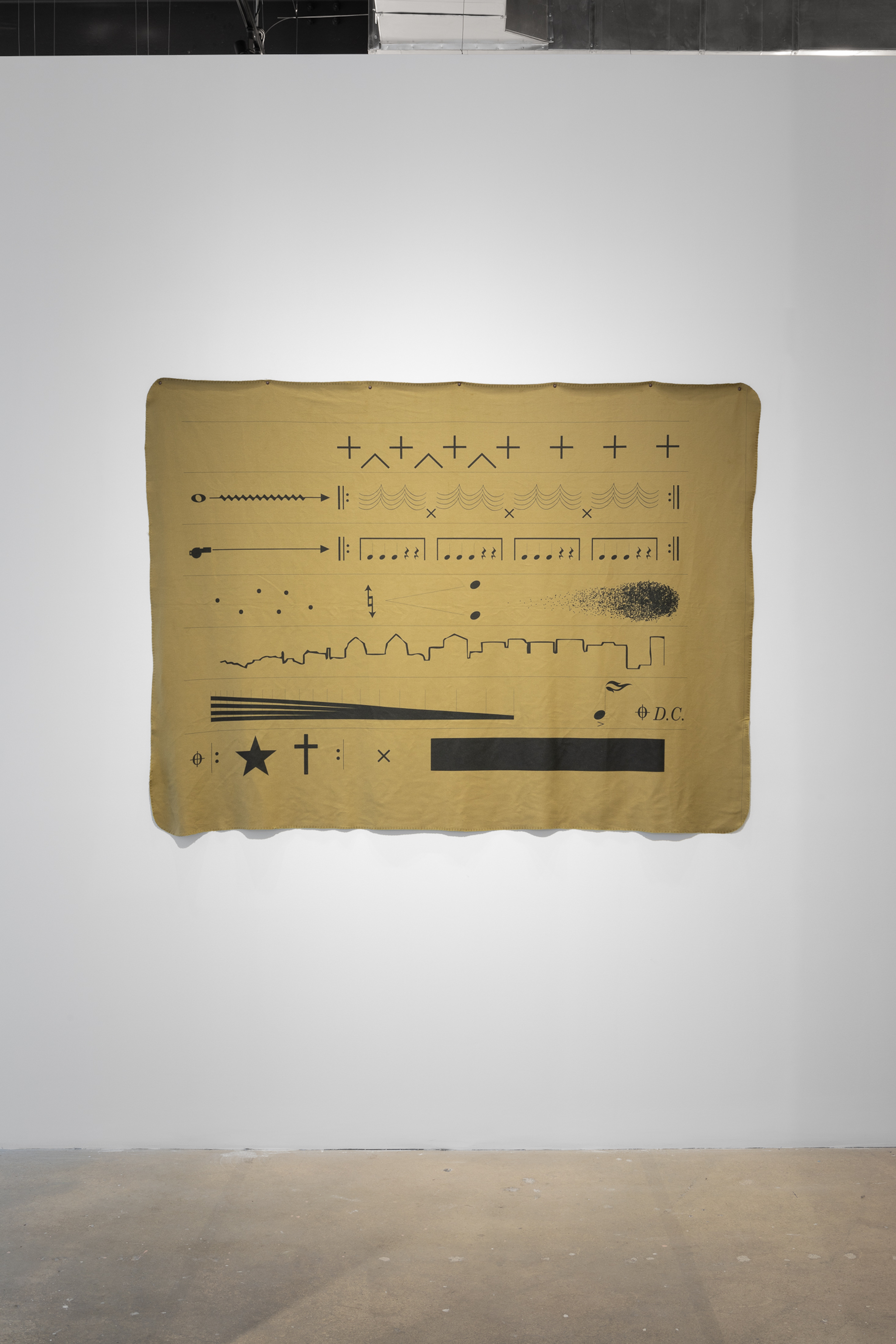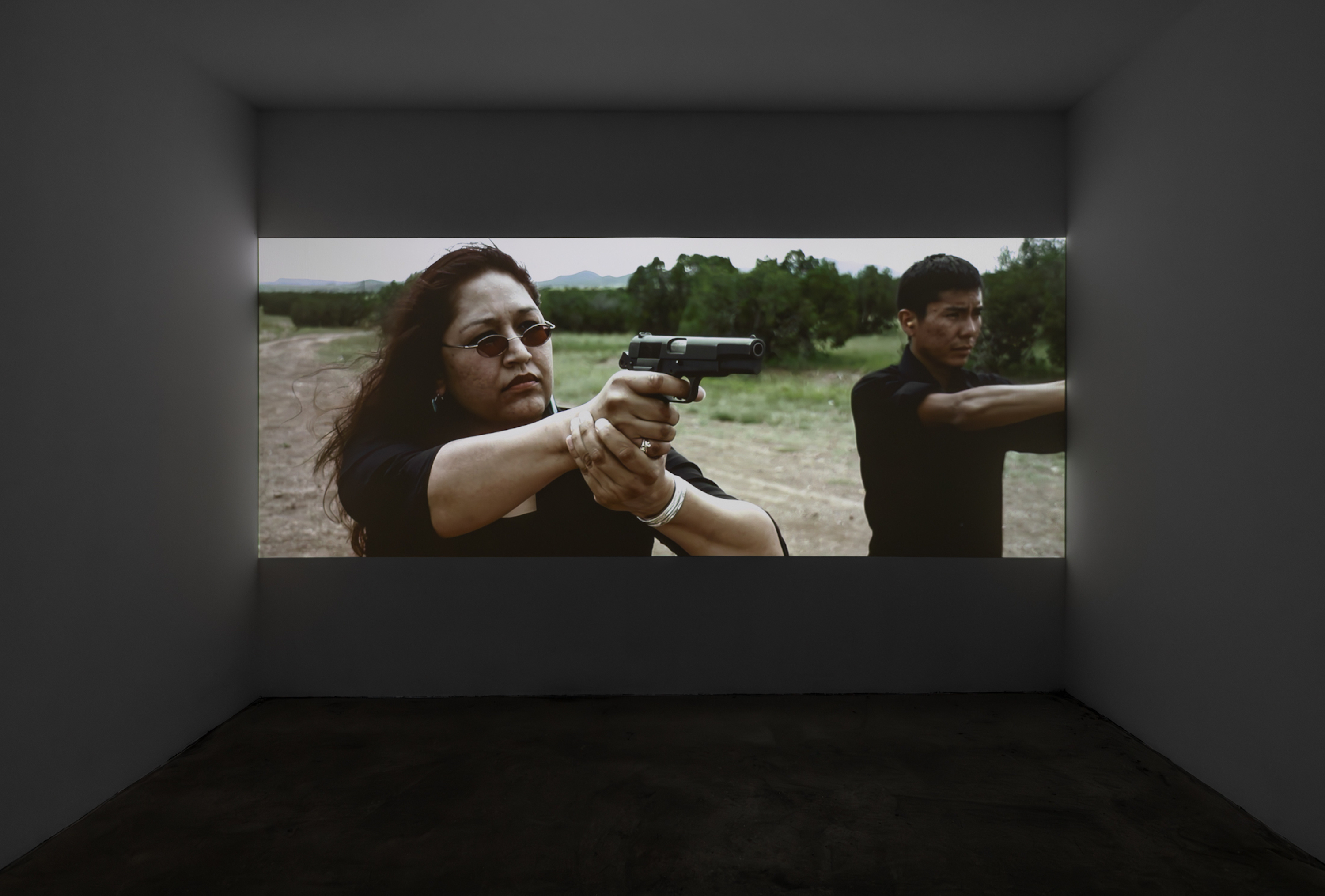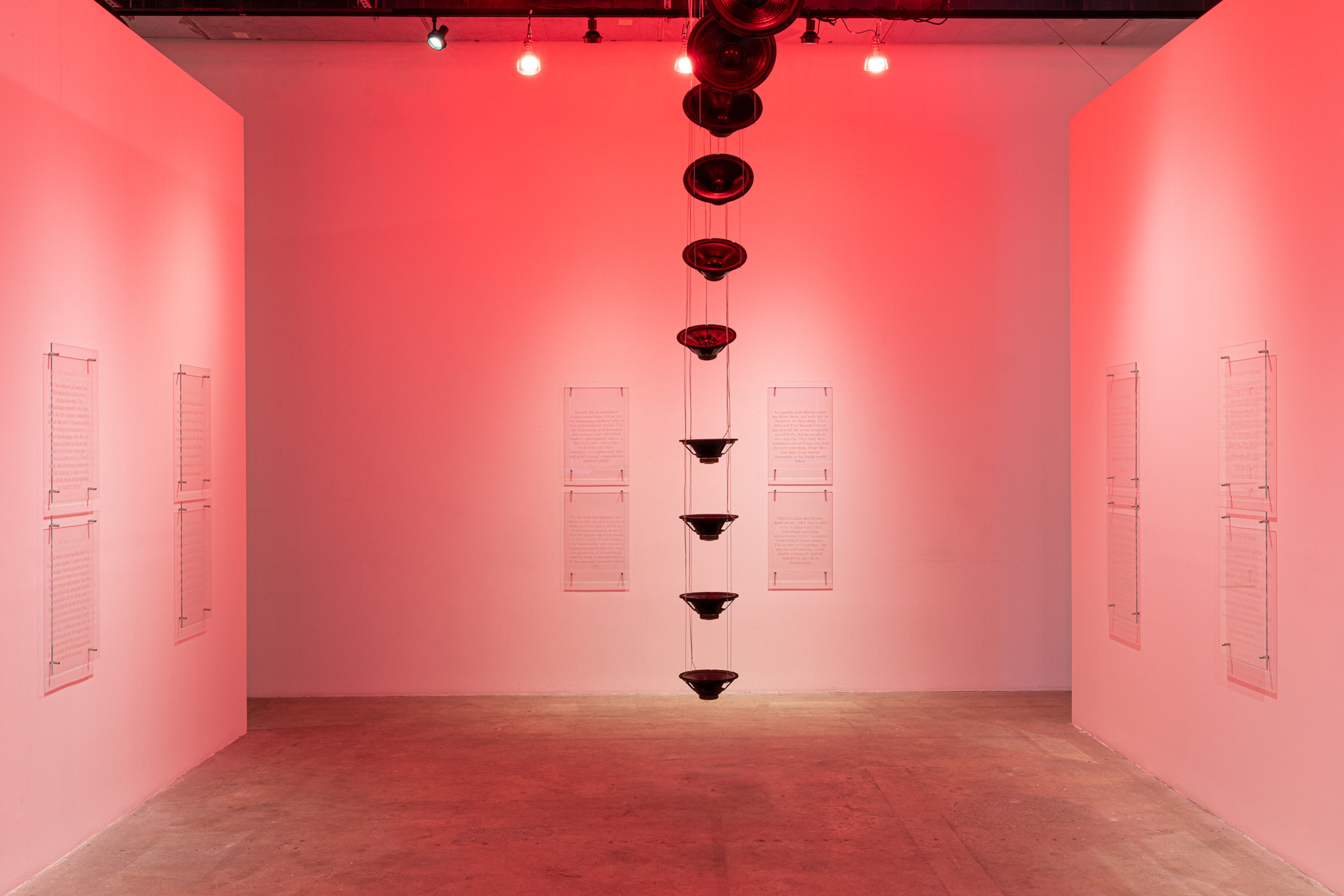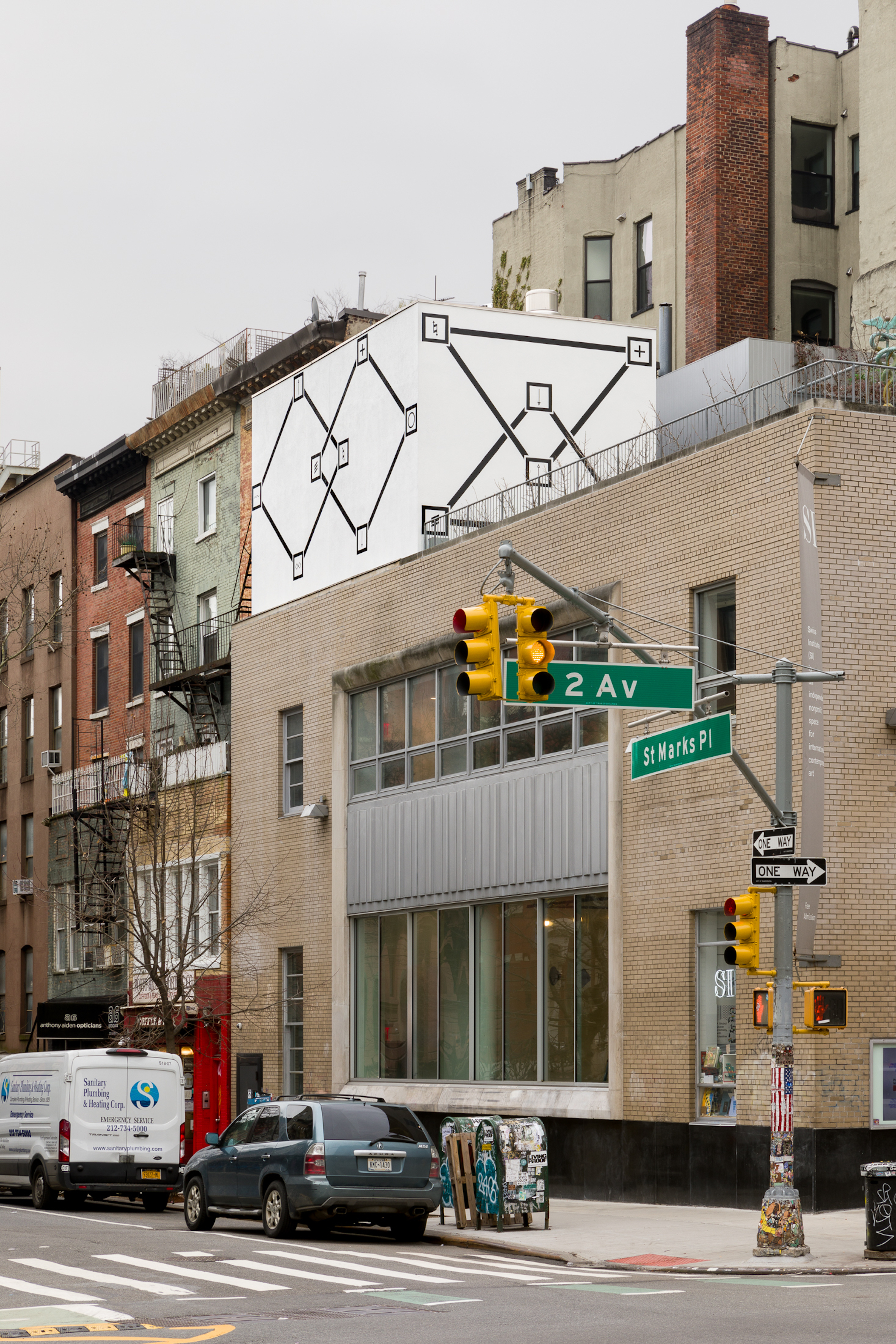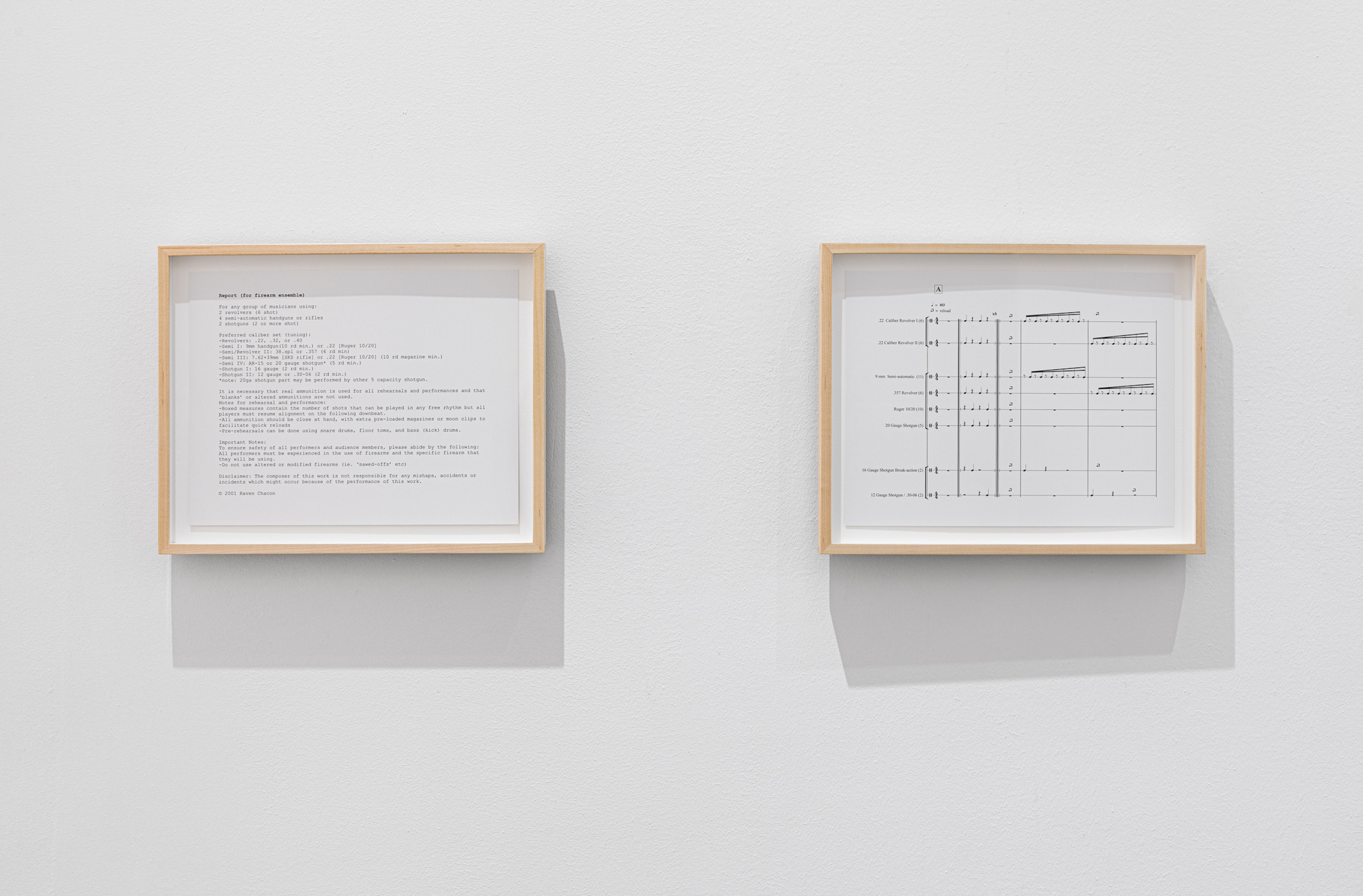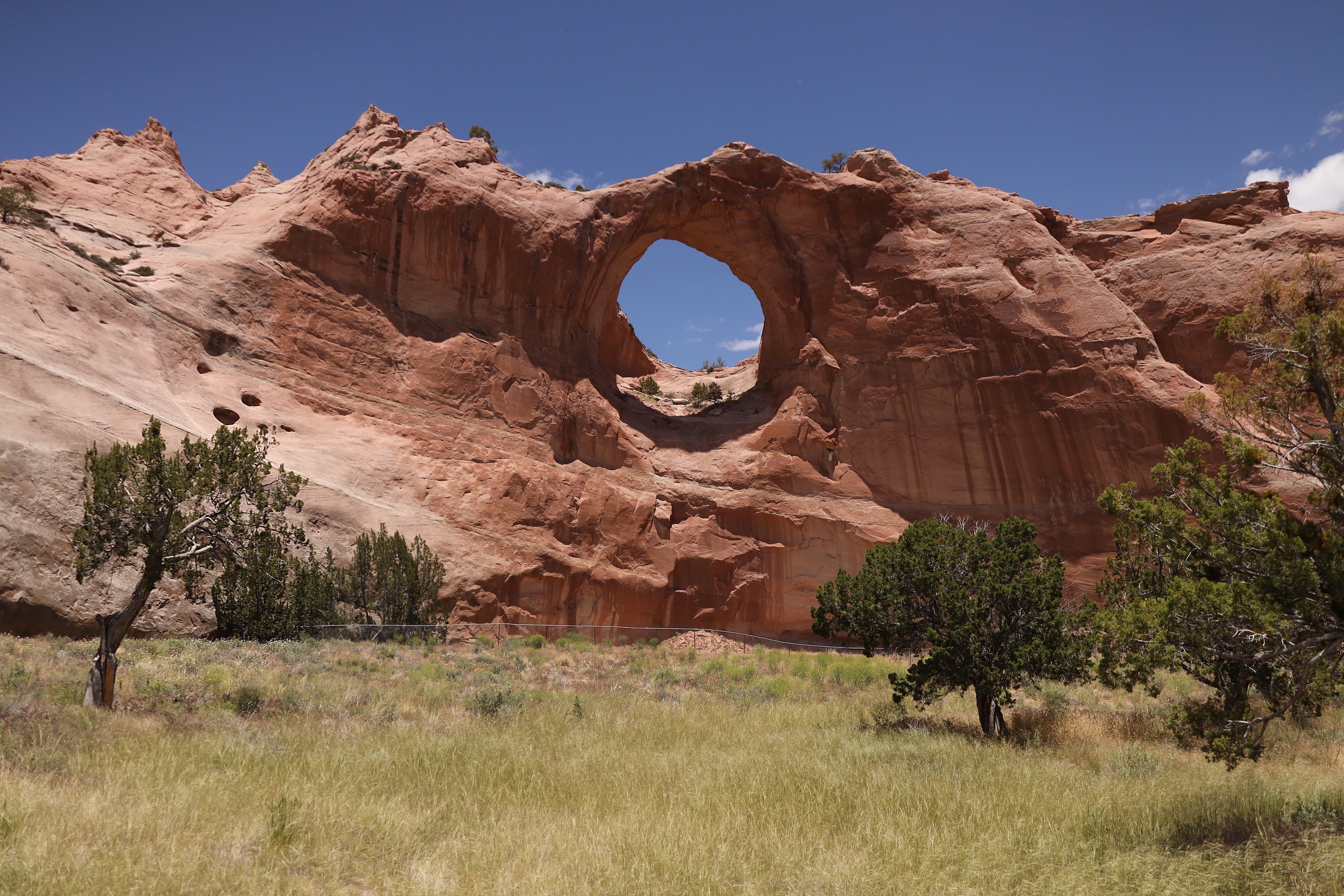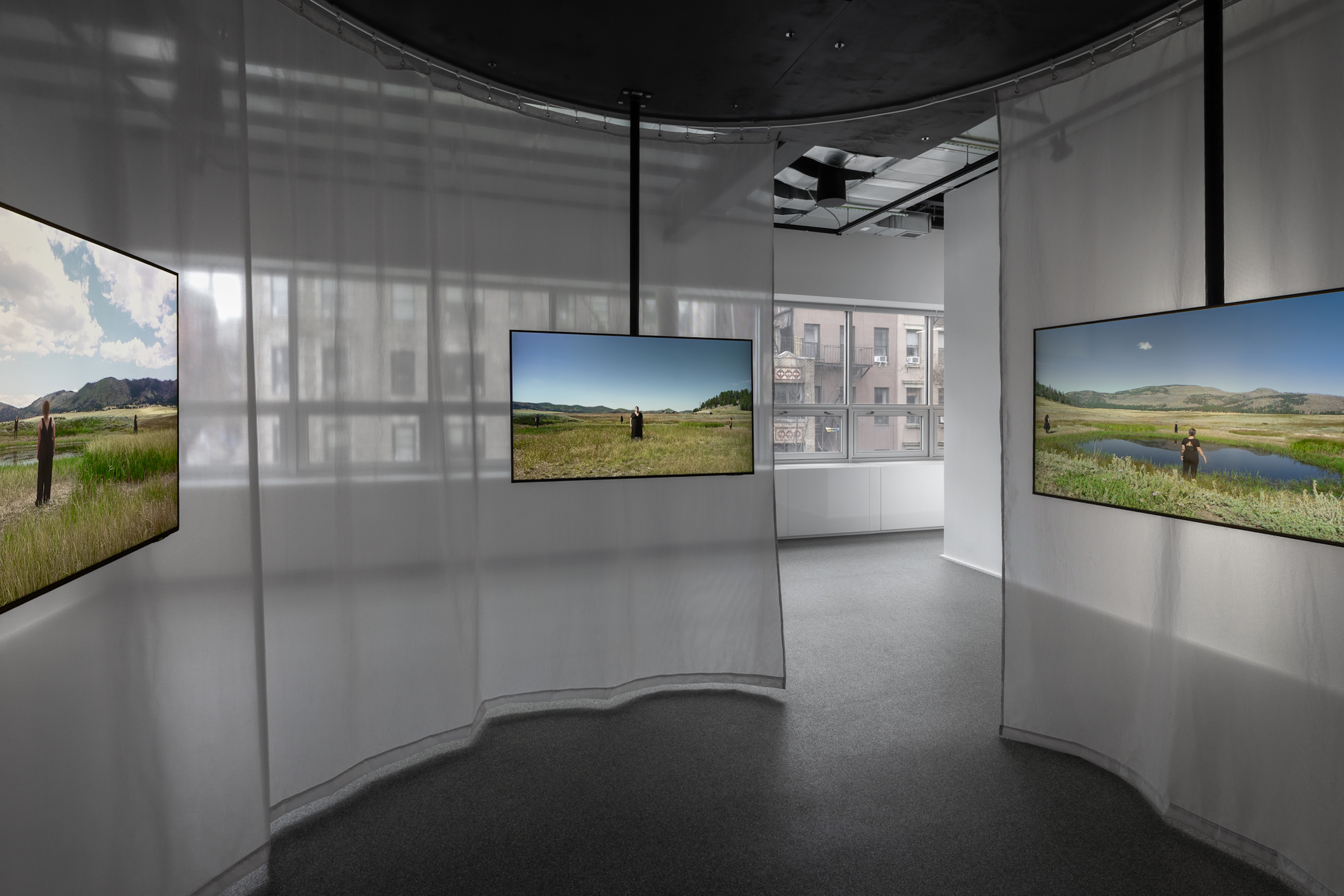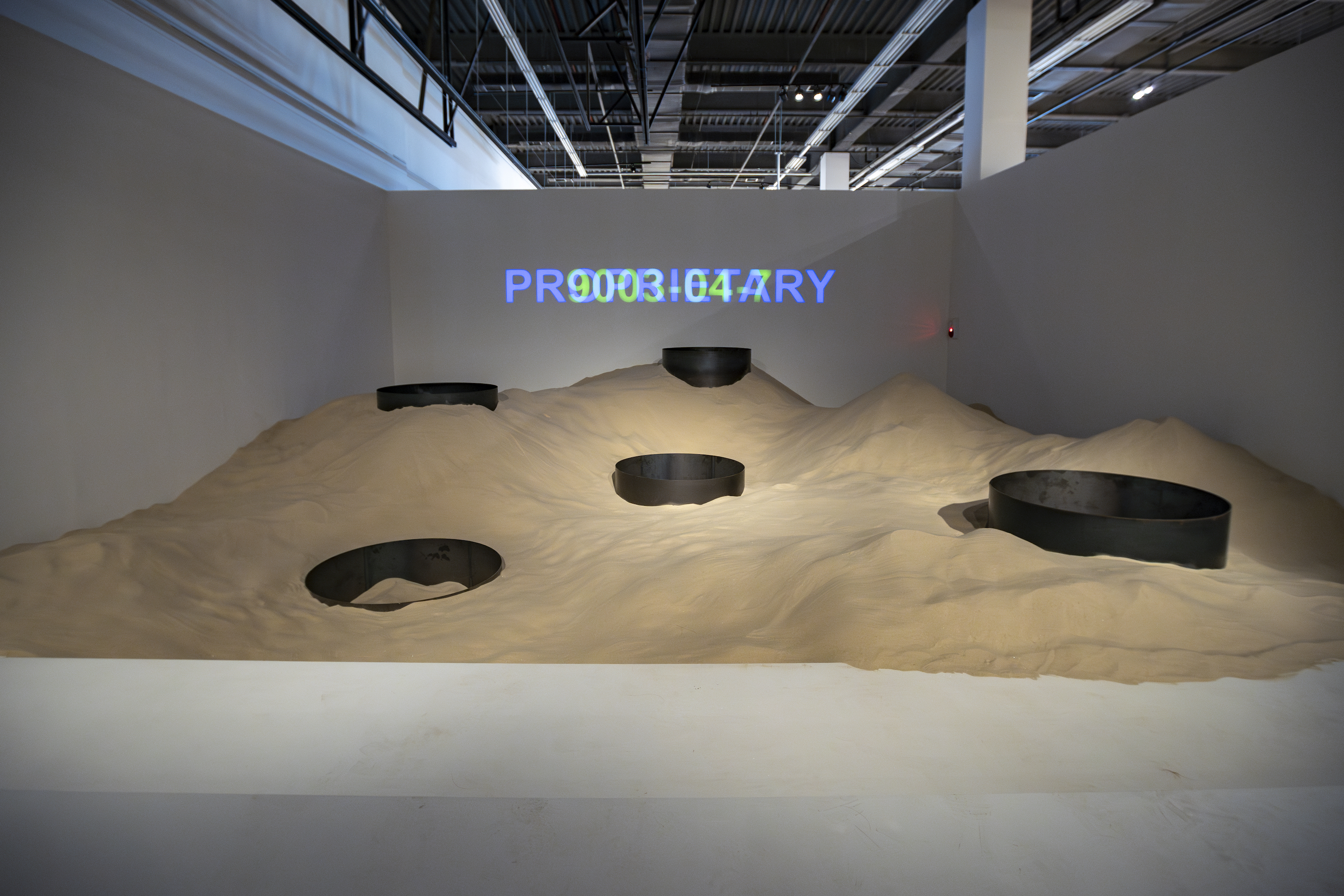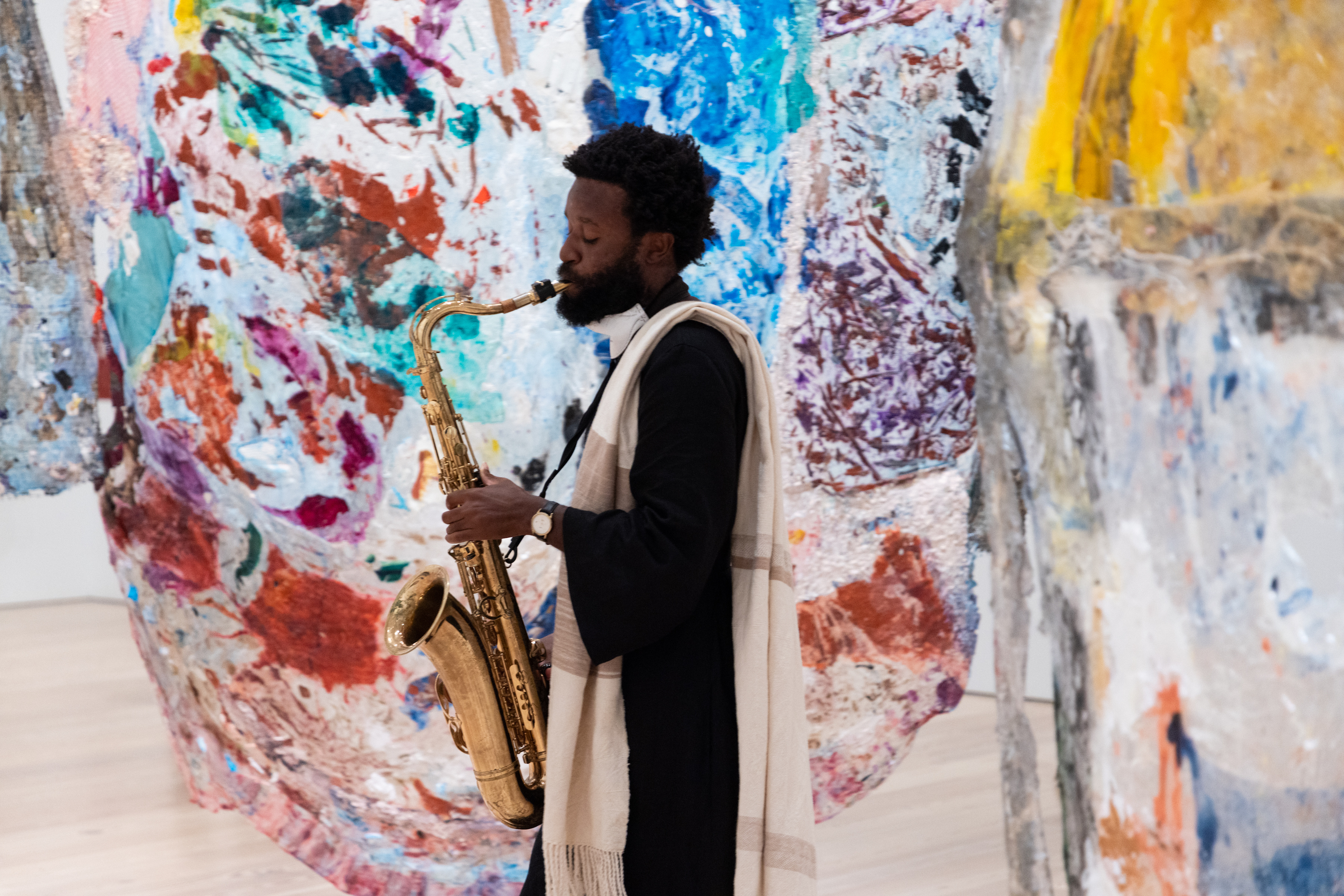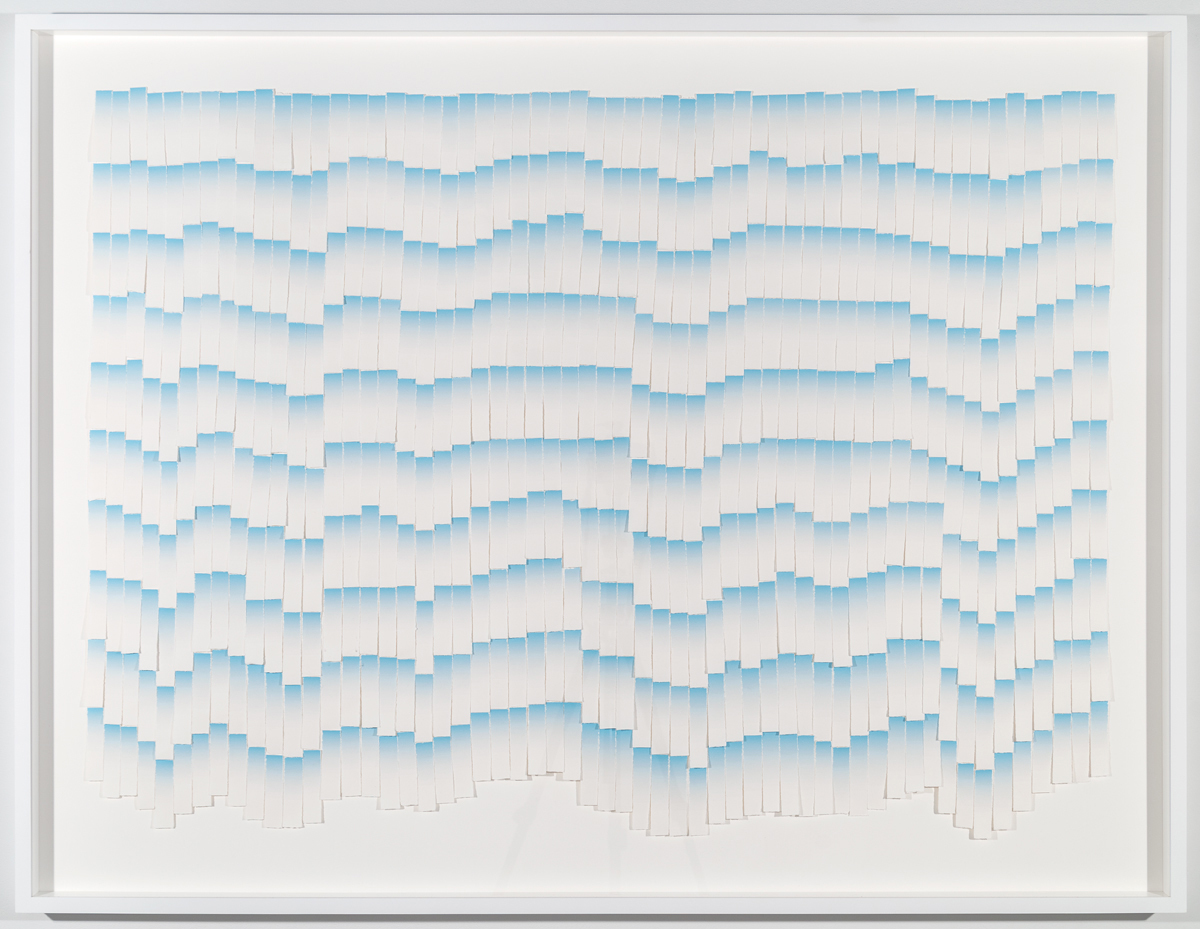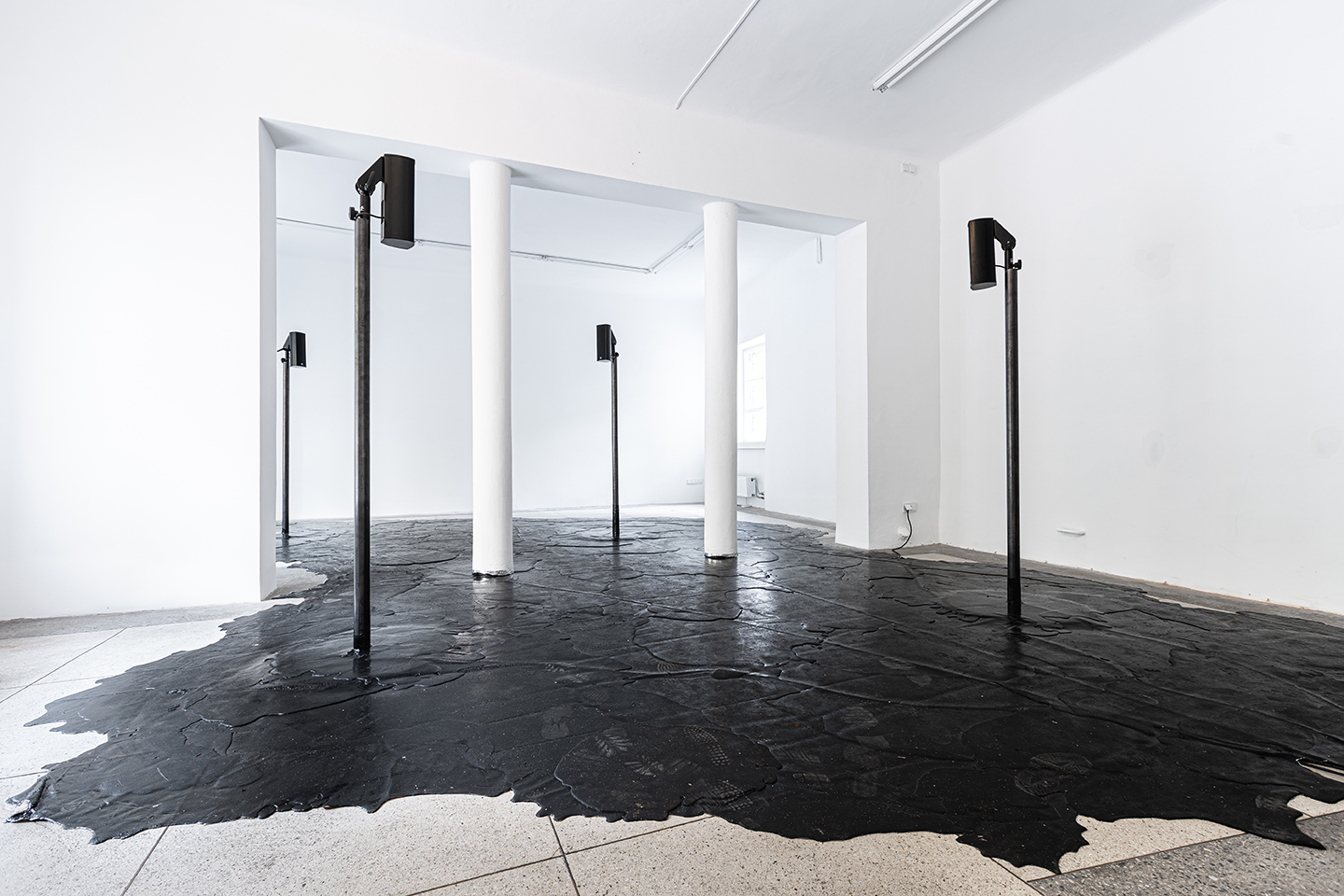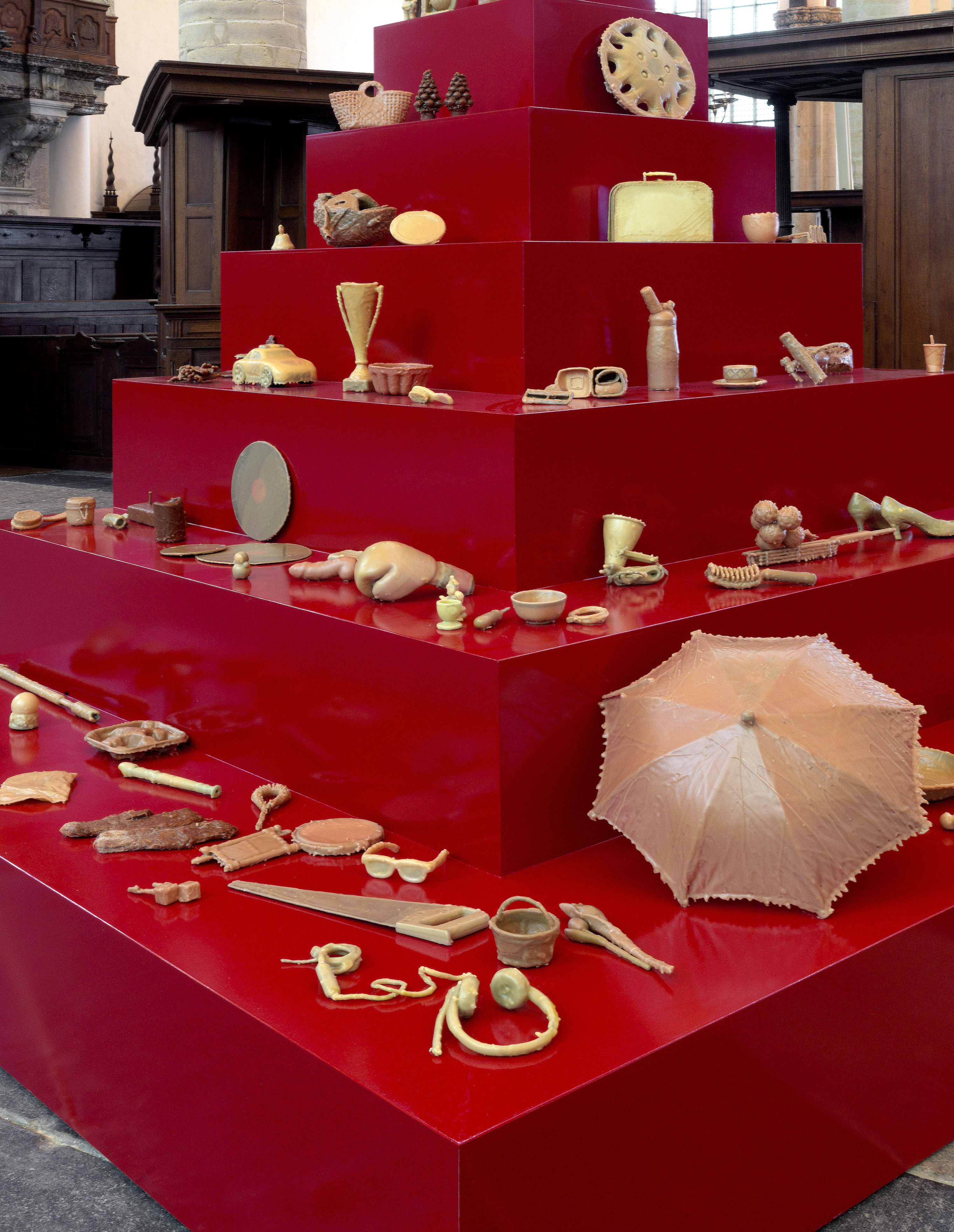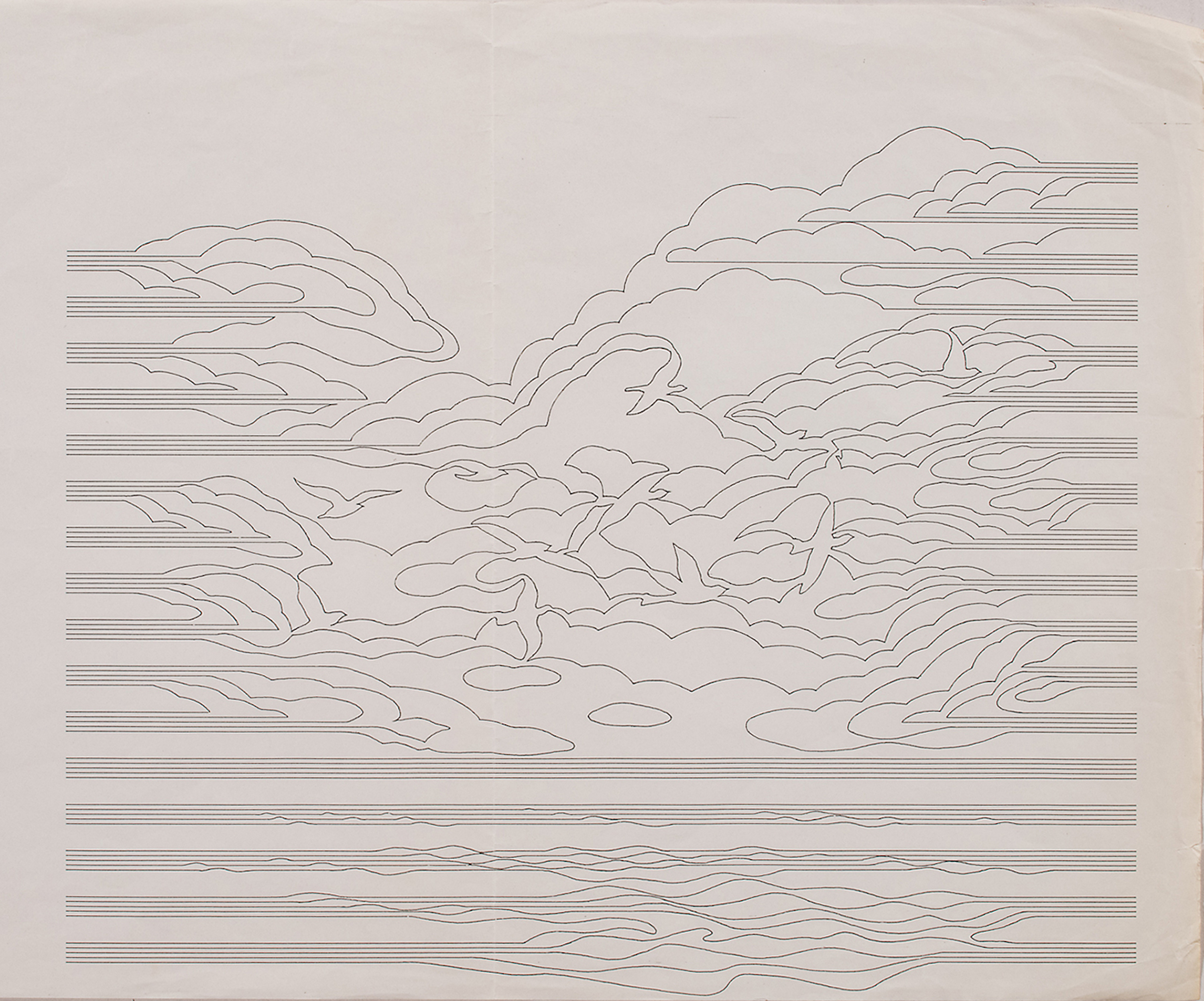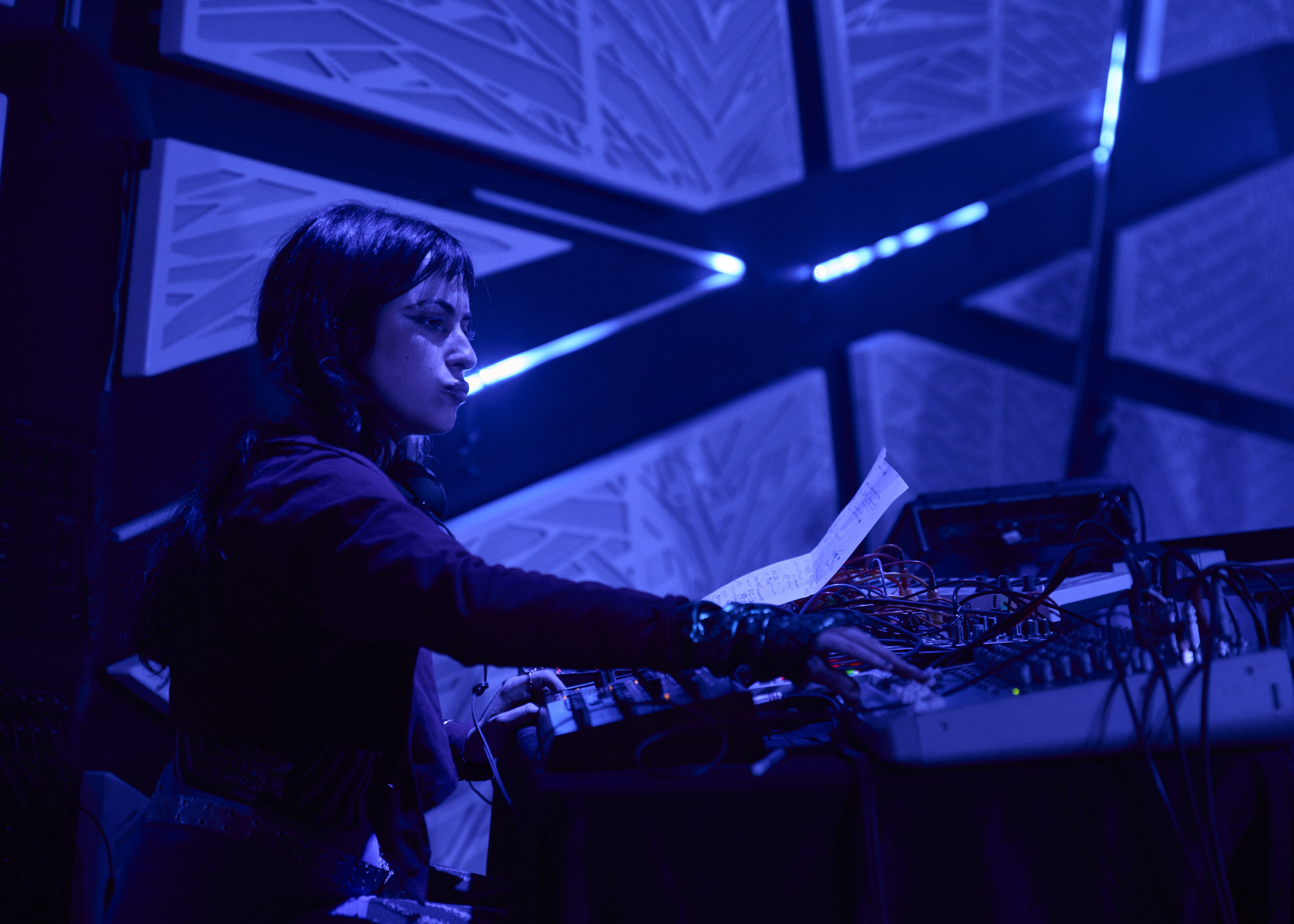January 25–April 14, 2024
The flag-score that opens composer and sound-artist Raven Chacon’s exhibition at Swiss Institute—featuring work made over the past twenty-five years alongside a new sound and video installation—is a miniature portrait of his career. American Ledger No. 1 (Army Blanket) (2020), a graphic history of the United States in the form of an army blanket, is embossed with icons of waves, flames, police whistles, wood-chopping axes, and a fractured city skyline. Chacon’s main interests are all there: notation in the expanded field, the interplay of various mediums, the embeddedness of sound and landscape, and the malleability of map and territory. Working with post-Cagean aesthetics yet advancing them within a Diné/Navajo context, Chacon’s work suggests that notation is an imposition onto sound comparable to colonialism’s imposition onto the land.
The opening room contains the installation Still Life No. 3 (2015), in which a series of glass panels mounted onto the walls and engraved with white fonts tell the Diné Bahane’ creation myth, which describes the birth of light and color in worlds below ours, the raising of the waters, and the formation of mountains and celestial bodies. The transparent and reflective surface makes the glossy text intentionally difficult to read, as though to indicate that these words are also vulnerable to dissolution. This disorienting transmission is paired with a row of speakers forming an arch that almost reaches through the windows facing St Marks Place. Separated like the frames of a film, these amplifiers express as sculptural gradients the morphology of duration: each one sounds the mythic text at different instants, the delayed voices of a Diné woman echoing in and out of phase and into a single indistinct murmur.
Report (2001/15) extends Chacon’s critique of the constraints of conventional musical objects. Here, he uses firearms as instruments—indicated both in framed prints of its scores and a single-channel video documenting a performance of the piece at a firing range—to satirize the obedient, military training of chamber musicians while pointing at the broader violence inscribed in transcription itself, which flattens the multiplicity of sound to a defined range of signs and brings all unstable variations of performance back to a stable and controlled form. Instead, Chacon’s oblong, constellated drawings tend to collapse staff sheets into a lusher topology. Reminiscent of Fluxus event scores or Pauline Oliveros’s sonic meditations, works like Duet (2000) and Vertical Neighbors (2024), the latter painted as a graphic mural on an exterior terrace wall, instruct performers to “play” non-sonorous elements like silence, gesture, concept, and feeling.
On the second floor, “Field Recordings” (1999), a series of pictographic flexi-discs, shows the dry canyons of the American Southwest while headphones play field recordings made in those spaces. Instead of straightforward indexes of the terrain, however, these audio works foreground the microphone and its interferences: the very technology of capture. There is still a transfer between the soil and the sound, but it is fuzzy and nonlinear. Rather than the calm of the canyons, we hear the layered noises of a crowded street, honking automobiles, industrial machinery, and barking dogs that break the illusion of sublimity and double as a metaphor for the destructive expropriations of colonial modernity. When counterposed to the images, this interpolated sonic data suggests that noise is latent within even the quietest landscapes.
Cordoned off by a translucent curtain hung in a circle in the middle of the room is a ghostly choir. For Four (Caldera) (2024) is a four-piece sung by women—each centered in a television screen suspended within the curtain—standing in a volcanic valley in New Mexico. The women sing in response to the silhouette of the mountain range they are looking at while rotating around their own axis, as if the land itself was a form of notation. This circulatory operation is repeated in the presentation of the videos, which sync and de-sync as the monitors turn on and off in clockwise motion. Here the colonization of the land is materialized both in its horizon and in the elegiac figures who interpret it. The imprecise counterpoint of voices, based on the relational dissonances between the four women, produces a pristine sort of bulb. The soprano improvisations and silver timbres point more directly to their conditioning than that of the land, yet Chacon’s piece suggests that the land remembers, embodies, and propagates its affects through the singers’ throats.
Indeed, throughout this show, the land is the richest and most concrete of notations. How it is played is a question of culture. Chacon finds in the dilation of sonic parameters the awareness of a dispossession: the land has already been dynamited. Expanding from the staff system like the Downtown experimentalists once did, but concerned with an Indigenous repertoire of political challenges and imaginative extrications—what does the land say? how can we hear it speak?—he suggests that the limits of traditional notation point to a resistance to variation typical of the colonial legacy. But if scores are sets of rules, Chacon proposes that they might also allow for new modes of collaboration and inhabitation.
